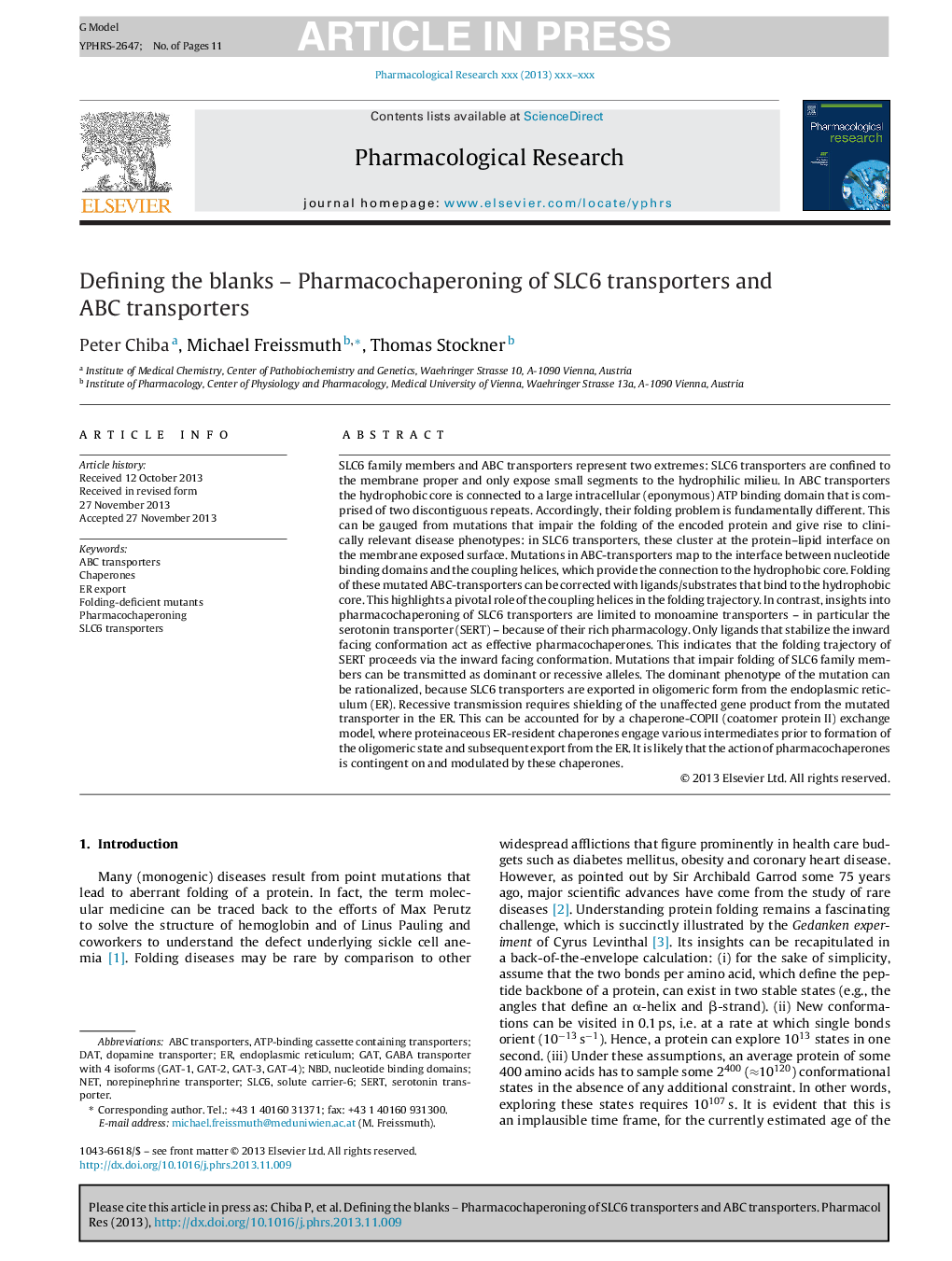| کد مقاله | کد نشریه | سال انتشار | مقاله انگلیسی | نسخه تمام متن |
|---|---|---|---|---|
| 5843635 | 1560856 | 2014 | 11 صفحه PDF | دانلود رایگان |
عنوان انگلیسی مقاله ISI
Defining the blanks - Pharmacochaperoning of SLC6 transporters and ABC transporters
دانلود مقاله + سفارش ترجمه
دانلود مقاله ISI انگلیسی
رایگان برای ایرانیان
کلمات کلیدی
موضوعات مرتبط
علوم پزشکی و سلامت
داروسازی، سم شناسی و علوم دارویی
داروشناسی
پیش نمایش صفحه اول مقاله

چکیده انگلیسی
SLC6 family members and ABC transporters represent two extremes: SLC6 transporters are confined to the membrane proper and only expose small segments to the hydrophilic milieu. In ABC transporters the hydrophobic core is connected to a large intracellular (eponymous) ATP binding domain that is comprised of two discontiguous repeats. Accordingly, their folding problem is fundamentally different. This can be gauged from mutations that impair the folding of the encoded protein and give rise to clinically relevant disease phenotypes: in SLC6 transporters, these cluster at the protein-lipid interface on the membrane exposed surface. Mutations in ABC-transporters map to the interface between nucleotide binding domains and the coupling helices, which provide the connection to the hydrophobic core. Folding of these mutated ABC-transporters can be corrected with ligands/substrates that bind to the hydrophobic core. This highlights a pivotal role of the coupling helices in the folding trajectory. In contrast, insights into pharmacochaperoning of SLC6 transporters are limited to monoamine transporters - in particular the serotonin transporter (SERT) - because of their rich pharmacology. Only ligands that stabilize the inward facing conformation act as effective pharmacochaperones. This indicates that the folding trajectory of SERT proceeds via the inward facing conformation. Mutations that impair folding of SLC6 family members can be transmitted as dominant or recessive alleles. The dominant phenotype of the mutation can be rationalized, because SLC6 transporters are exported in oligomeric form from the endoplasmic reticulum (ER). Recessive transmission requires shielding of the unaffected gene product from the mutated transporter in the ER. This can be accounted for by a chaperone-COPII (coatomer protein II) exchange model, where proteinaceous ER-resident chaperones engage various intermediates prior to formation of the oligomeric state and subsequent export from the ER. It is likely that the action of pharmacochaperones is contingent on and modulated by these chaperones.
ناشر
Database: Elsevier - ScienceDirect (ساینس دایرکت)
Journal: Pharmacological Research - Volume 83, May 2014, Pages 63-73
Journal: Pharmacological Research - Volume 83, May 2014, Pages 63-73
نویسندگان
Peter Chiba, Michael Freissmuth, Thomas Stockner,